
- Share via
The stylish co-living apartment building in Koreatown was all but complete when the bottom fell out.
Inflation had eaten up $14 million in construction loans. The interest rate on the primary loan had more than doubled to 10%, and there was nothing left to make payments.
Facing default or a fire sale, owner Prophet Walker reached for a lifeline. In March, he texted Miguel Santana, president and chief executive of the California Community Foundation. Within days, a strategy was in motion to save the project.
Santana cobbled together $2.9 million in grants and zero-interest loans from donors who wanted their funds used for innovative projects with social impact.
On July 5, less than four months after Walker sent his text, men and women placed in shelters through L.A. Mayor Karen Bass’ Inside Safe program began moving into the 58-bedroom building on South Gramercy Place.
The transformation of the Eaves, built as a mixed market-rate and affordable rental with a micro-community vibe, is the first win for LA4LA, an ambitious plan Bass unveiled in April to get government, philanthropy and the private sector working together on affordable housing.
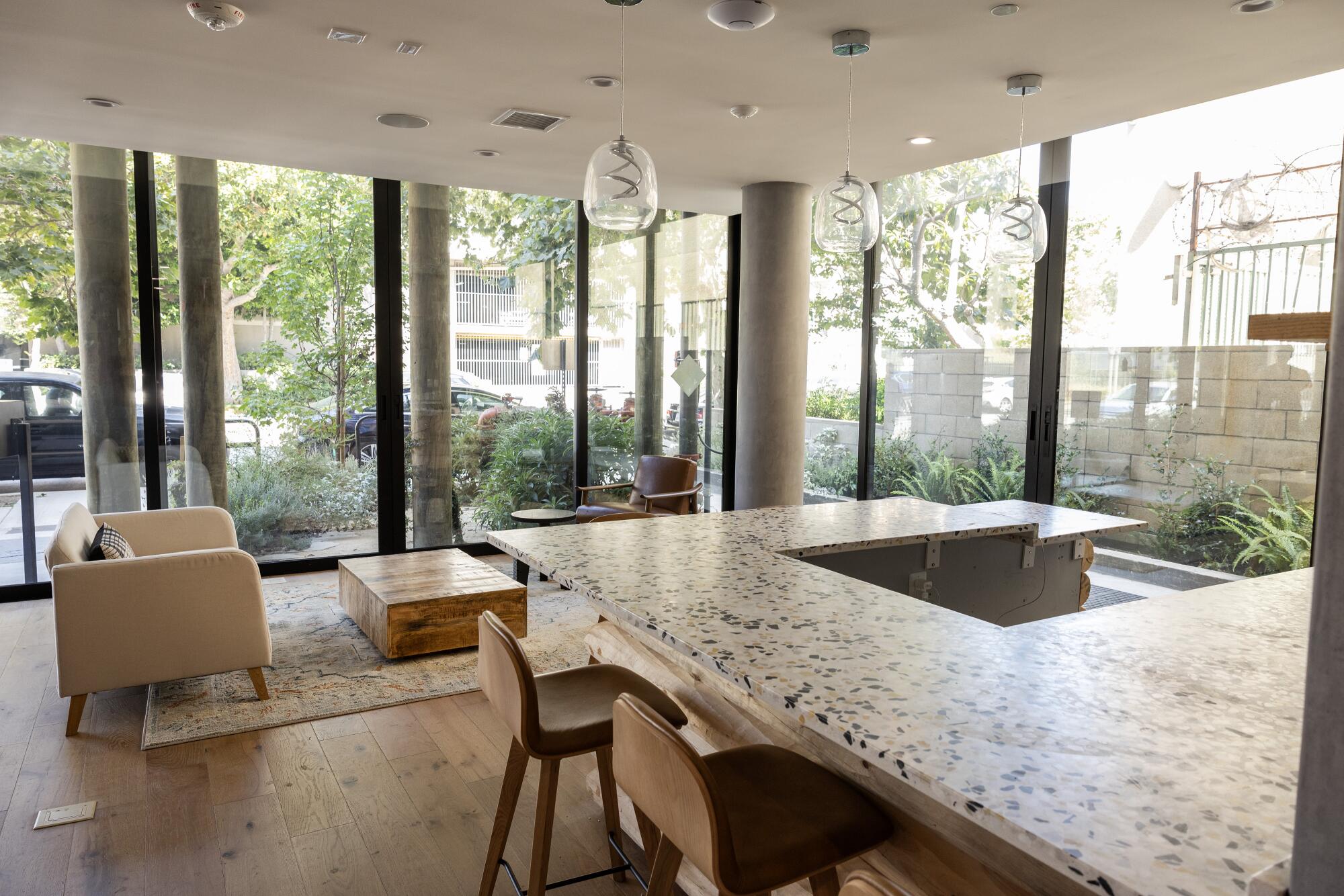
Operating under the nonprofit umbrella of the California Community Foundation, LA4LA hopes to take advantage of a distressed housing market to create affordable housing quickly without taxpayer dollars. It has consultants scouting the L.A. real estate market for properties like the Eaves — apartment buildings under construction or newly completed that are stalled or underwater.
“In this kind of a market, where you have people who need to sell quickly, how are you capturing that for affordable housing?” asked Sarah Dusseault, lead strategist for LA4LA. “In 2008, when people needed to sell single-family homes, they were gobbled up by large-scale institutional investors, large-scale equity funds.”
The Eaves offers amenities that far exceed the minimum standards required for housing those coming off the streets.
The six-story building has 13 suites. With the exception of four singles, the suites have six bedrooms, each with its own bath and air conditioner, and a common kitchen/living room. The ground floor has a community space with a cafe and mini-kitchen. A communal dining hall has a full kitchen and seating indoors and outdoors on a fourth-floor balcony. The roof, with views of downtown, Hollywood and Century City, has a wood-paneled patio and a small performance stage ensconced in a tree-shaded garden. It’s all infused with the ambiance of a country lodge.
Getting a room there might seem like a winning lottery ticket, but the frills come at no cost to taxpayers — the project received no government construction funds.
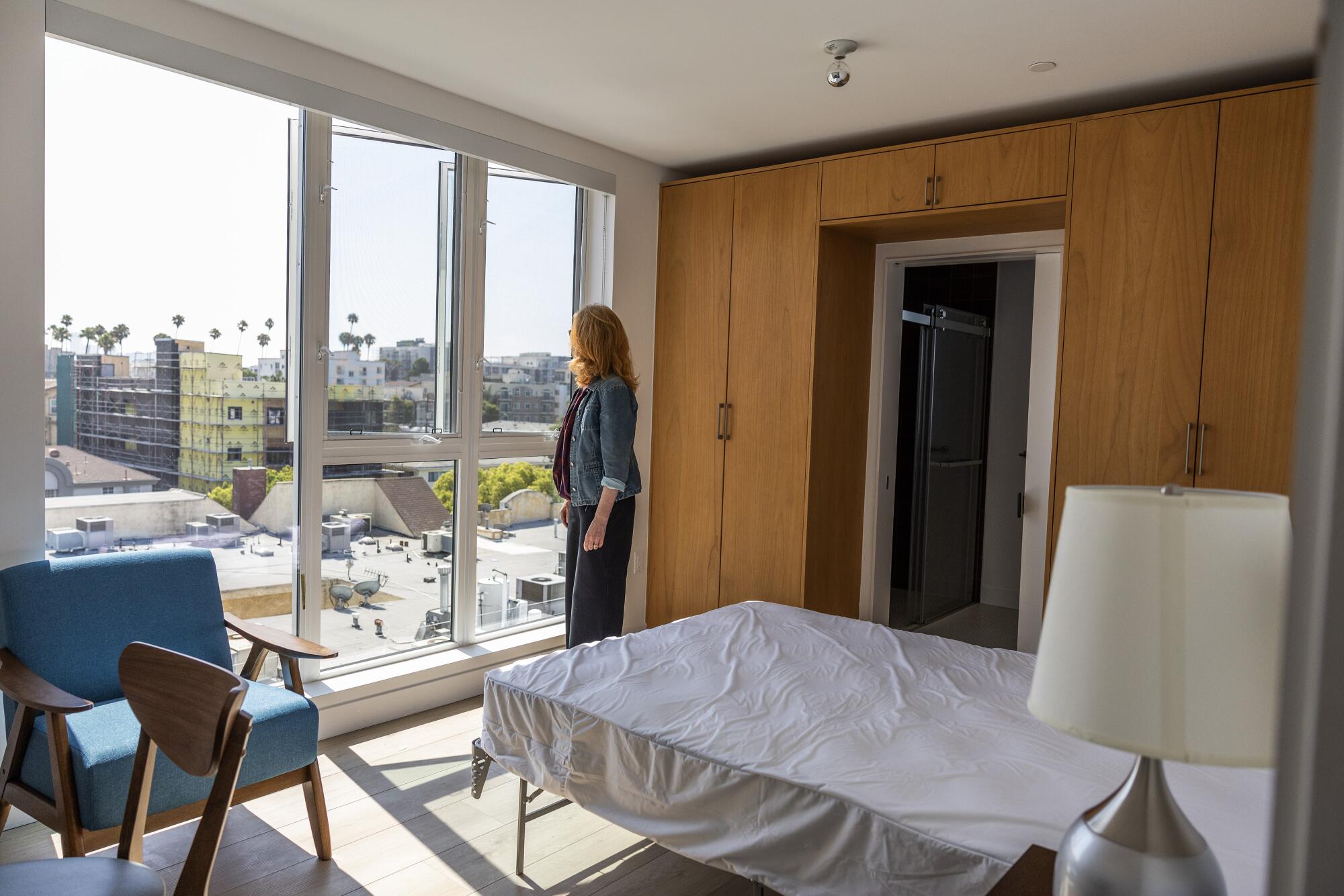
Dusseault hopes the Eaves will show leaders in philanthropy and high-worth individuals a model to invest in.
“We’ve shown it can be done, and we’ve shown how it can be done quickly,” she said.
Infusing a distressed project with philanthropic grants and interest-free loans, coupled with guaranteed income through a government-subsidized master lease, makes it more attractive to long-term investors.
“You can create a situation where you have refinancing opportunities at a much lower interest rate,” Dusseault said.
Walker, 36, who will retain ownership of the building through a limited liability corporation, is now working with LA4LA to obtain permanent financing.
At the Eaves, he set out to replicate the ambience of his Treehouse apartment in nearby Hollywood, which has gained media attention for its co-living floor plan and a management style that encourages community-building.
He said the design reflects his life experience.
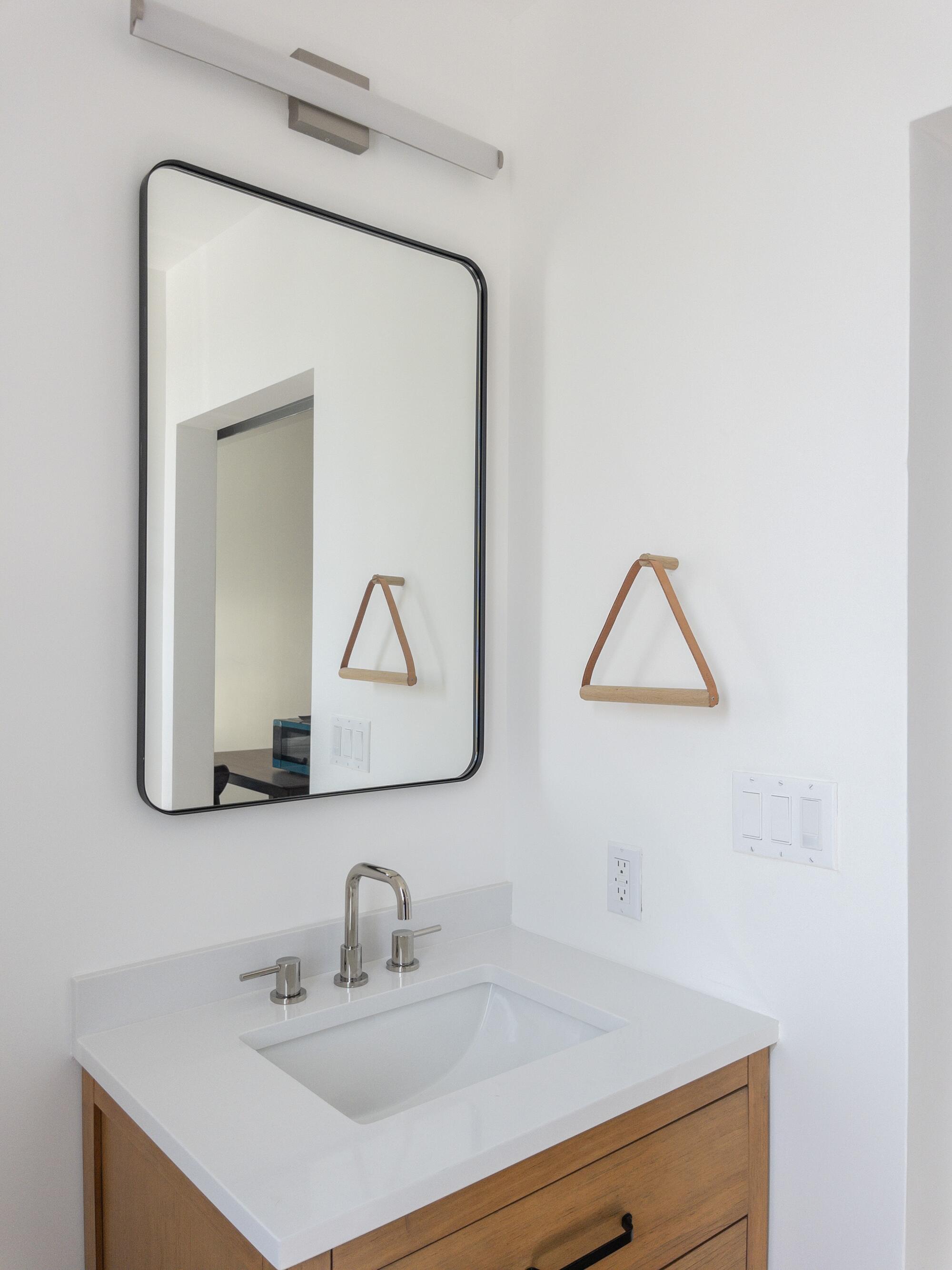
Born and raised in Watts, he spent five years in prison, earned a degree, worked in construction, became a developer, bought a home in Playa Vista and had a crisis of isolation. He now lives in Leimert Park, a community that feels more like home.
He described his design mantra: “Does it feel like home? If not, scrap it. ... How do we build a building where there is serendipitous interaction?”
Part of the answer, he believes, is creating communities that bridge income levels. That was his plan for the Eaves.
In exchange for allowing him to build more units, the city’s transit-oriented community program required seven bedrooms to be set aside for low-income tenants making 50% of the area’s median income.
Walker wanted to reserve 16 more for what is called workforce housing, with incomes at 80% of the median. That wouldn’t produce enough revenue to support a conventional construction loan, even in the more favorable environment of 2022.
United Way of Greater Los Angeles, which was raising capital for affordable housing, filled the gap with a $4.5-million second, or mezzanine, loan.
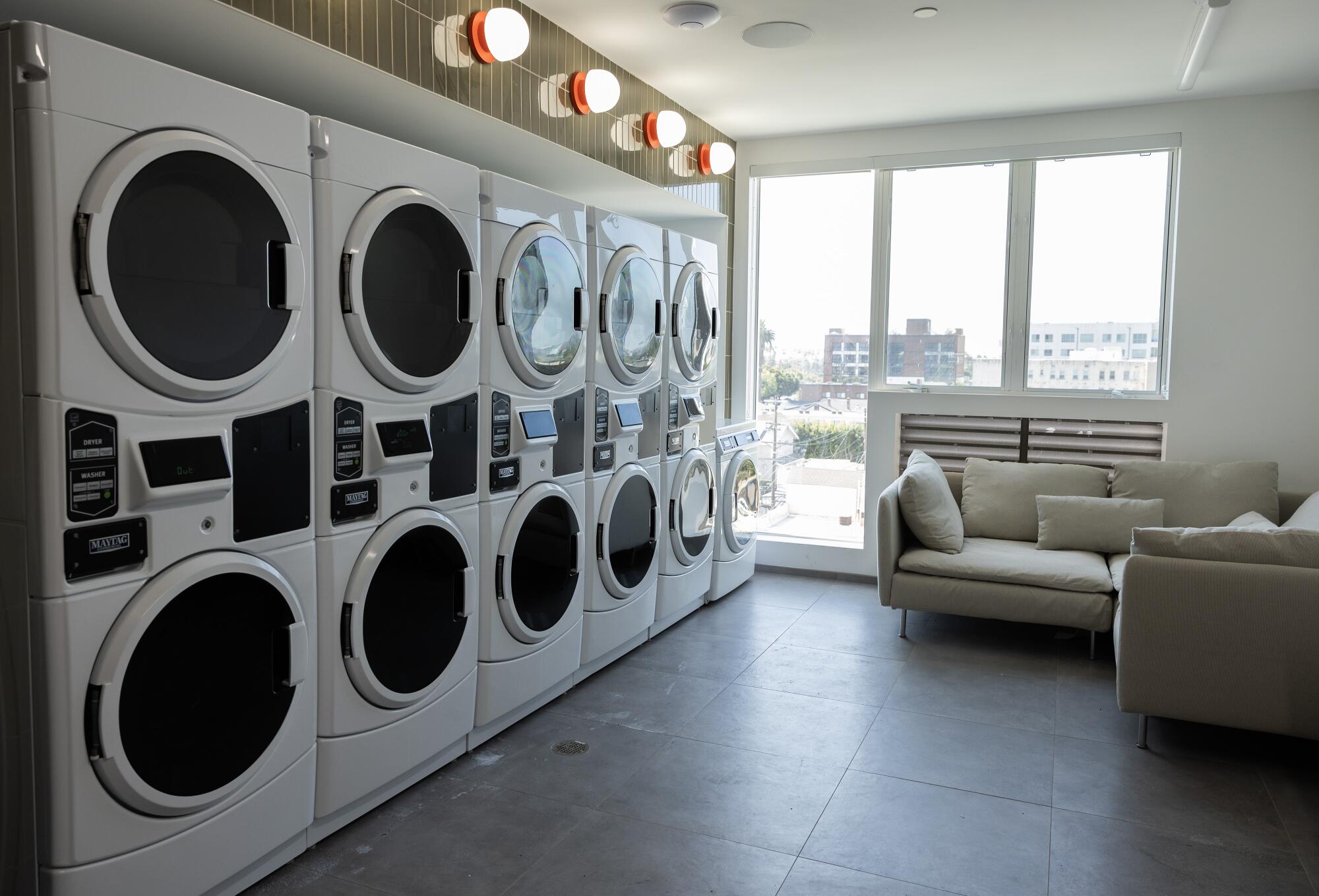
The idea is to create an “alternative financing mechanism to provide below market capital for the construction of affordable housing by for-profit builders,” said Jason Riffe, who manages a private capital fund and was then director of United Way’s Housing Initiatives.
By avoiding the time-consuming and cumbersome process of raising capital through tax credits, the loan allowed Walker to build units at an average cost of about $300,000, less than half the going cost for tax-credit projects supplemented by the city’s Proposition HHH bond funds. And it was all private money.
Then, the souring economy left Walker with a construction lien he couldn’t pay and interest rates too high to support his rental model.
Santana got the text from Walker on March 15, a Friday. He and Dusseault toured the project on the following Sunday, and, with a nod from the LA4LA advisory board, committed.
Santana secured $1.2 million in grants from two donors — the Marilyn and Jeffrey Katzenberg Foundation and Beverly Hills-based investor Stephen J. Cloobeck — and $1.7 million from investor-directed funds held by the California Community Foundation.
With final construction back on track, the mayor’s office, the Los Angeles Homeless Services Authority and the Housing Authority of the City of Los Angeles collectively pushed through the bureaucratic hurdles — getting permits approved, signing an $897,000 per year master lease and contracting with a service provider. An application is in the works for federal housing vouchers that would replace the city and county funds for the master lease and service provider.
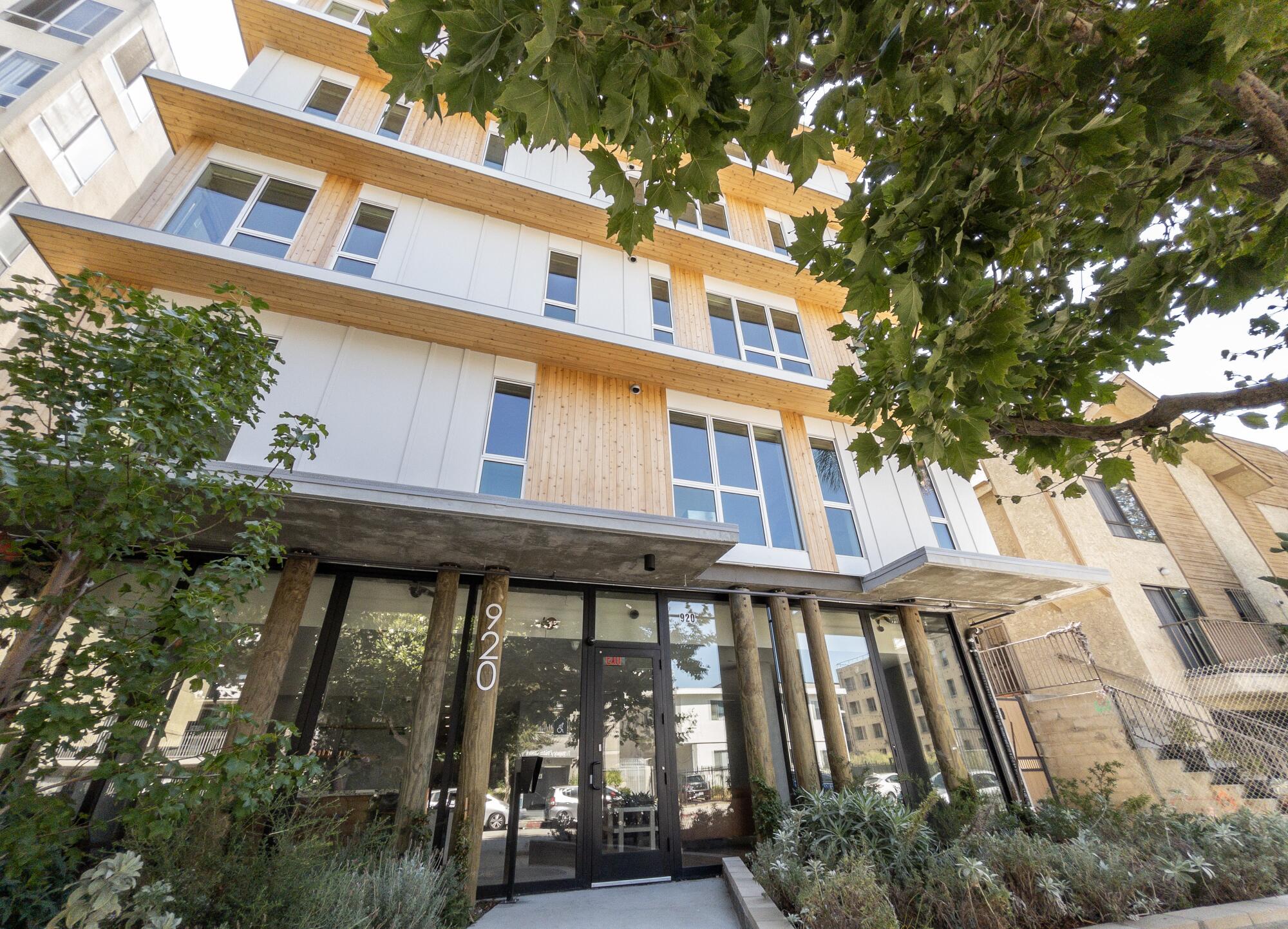
The service provider — the nonprofit People Assisting the Homeless, or PATH — takes care of case management, an on-site manager and 24-hour security for tenants, who pay 30% of their income in rent. PATH will work with a local group to organize community dinners.
With one deal done, LA4LA has an aggressive agenda. A supply of permanent housing like the Eaves is needed to prevent a logjam in the hotels and motels where people in the Inside Safe program go after leaving the streets.
“We have to be able to get to scale,” Bass said in an interview. “It is not one by one. We have to figure out how we do large groups at a time.”
There is no shortage of opportunities. Dusseault said consultants have identified seven more potential projects. The California Community Foundation has raised $15 million, Santana said.
“Projects have stopped all over the city, in danger of being taken back,” Walker said.
LA4LA is not necessarily aiming to rescue them all. Santana and Dusseault see its role as being an innovator, to create models that others can adapt.
“Scale is about developing models that are predictable, that eliminate risk, that show there is a path,” Dusseault said. “We are essentially providing maps.”
More to Read
Sign up for Essential California
The most important California stories and recommendations in your inbox every morning.
You may occasionally receive promotional content from the Los Angeles Times.











